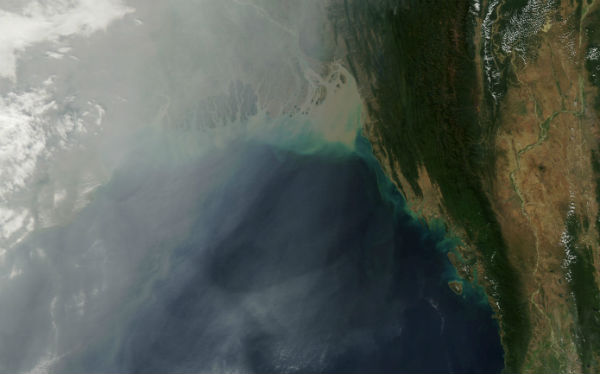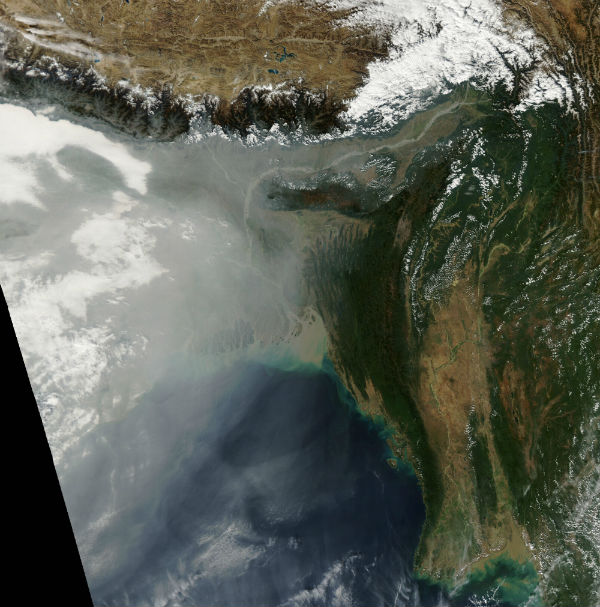Smoke continues to plague India and Bangladesh even months after onset of fires

Smoke from agricultural fires continues to plague northern India and its eastern neighbor, Bangladesh. Thick clouds of smoke plague Indian subcontinent since late October, 2012.
 The cloud obscures northeastern India and much of Bangladesh on January 11, 2013. The mouths of the Ganges are partially visible below the image center. (Credit: LANCE/MODIS)
The cloud obscures northeastern India and much of Bangladesh on January 11, 2013. The mouths of the Ganges are partially visible below the image center. (Credit: LANCE/MODIS)
The haze likely resulted from a combination of urban and industrial pollution, agricultural fires, and a regional meteorological phenomenon known as a temperature inversion. Usually the air higher in the atmosphere is cooler than the air near the surface, a situation that allows warm air to rise and disperse pollutants. However, cold air often settles over northern India in the winter, trapping warmer air—and pollution—close to the surface, where it has the greatest impact on human health.
 On January 10, the Moderate Resolution Imaging Spectroradiometer (MODIS) on NASA’s Aqua satellite captured this image of haze hugging the Himalayas and spilling out into the Ganges delta and Bengal Sea. (Credit: LANCE/MODIS)
On January 10, the Moderate Resolution Imaging Spectroradiometer (MODIS) on NASA’s Aqua satellite captured this image of haze hugging the Himalayas and spilling out into the Ganges delta and Bengal Sea. (Credit: LANCE/MODIS)
Air quality has emerged as a significant problem for India and Bangladesh in the past decade. A study conducted by Tel Aviv University researchers and published in the American Journal of Climate Change found that levels of air pollution in large Indian cities increased at some of the fastest rates in the world between 2002 and 2010—faster even than rapidly-growing Chinese cities.
Source: Earth Snapshots, Earth Observatory

Commenting rules and guidelines
We value the thoughts and opinions of our readers and welcome healthy discussions on our website. In order to maintain a respectful and positive community, we ask that all commenters follow these rules.